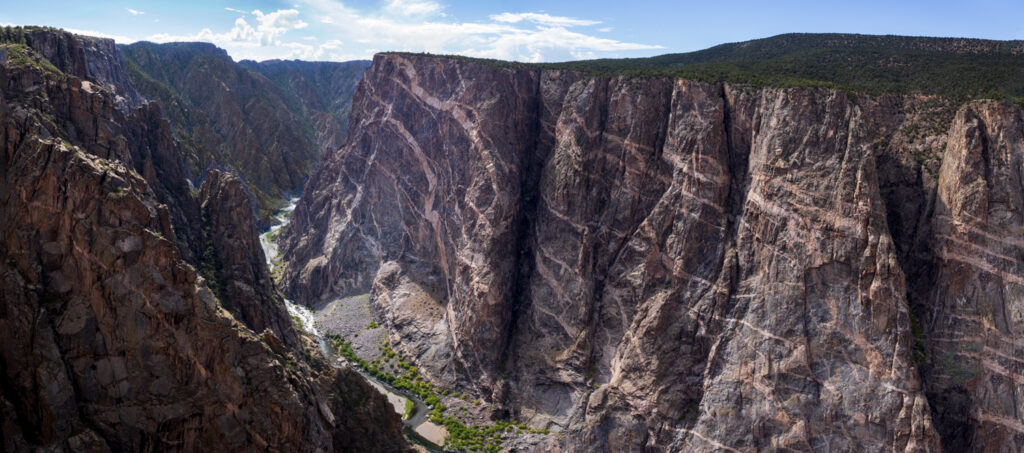
An ancient canyon wall painted by time and the Gunnison River’s relentless hand.
This work captures the awe-inspiring Painted Wall in Colorado’s Black Canyon of the Gunnison National Park, a geological masterpiece nearly two billion years in the making. The canyon’s towering cliffs—some dropping over 2,200 feet—are among the steepest in North America. The Painted Wall, the tallest cliff in Colorado at 2,250 feet, displays striking pale streaks of pegmatite, a light-colored intrusive rock that formed when molten magma forced its way through ancient dark gneiss. These vivid patterns are nature’s brushstrokes, painted over eons by tectonic pressure, volcanic activity, and relentless erosion from the Gunnison River.
First seen by European Americans in 1853 during Captain John W. Gunnison’s railroad survey, the canyon was long known to the Ute people, who considered it a sacred place and avoided entering its depths. In the early 20th century, explorers and engineers braved the treacherous walls to chart and harness the river’s power, eventually leading to the construction of the Gunnison Tunnel—a historic engineering feat.
Despite its rugged, arid appearance, the canyon supports a surprising diversity of life. Ponderosa pine, Douglas-fir, and Gambel oak cling to the rim, while canyon bottoms host cottonwoods and willows nourished by the river. Wildflowers such as Indian paintbrush and sego lily add seasonal bursts of color. The cliffs provide nesting sites for peregrine falcons, golden eagles, and white-throated swifts, while mule deer, rock squirrels, and black bears roam the surrounding highlands. The Gunnison River itself shelters rare fish species, including the Gunnison River roundtail chub.
In Black Canyon, the interplay of sunlight and shadow across the Painted Wall transforms ancient stone into living art—a reminder of nature’s power, patience, and precision. This image is not merely a view; it is a window into deep time and the enduring wildness of the American West.